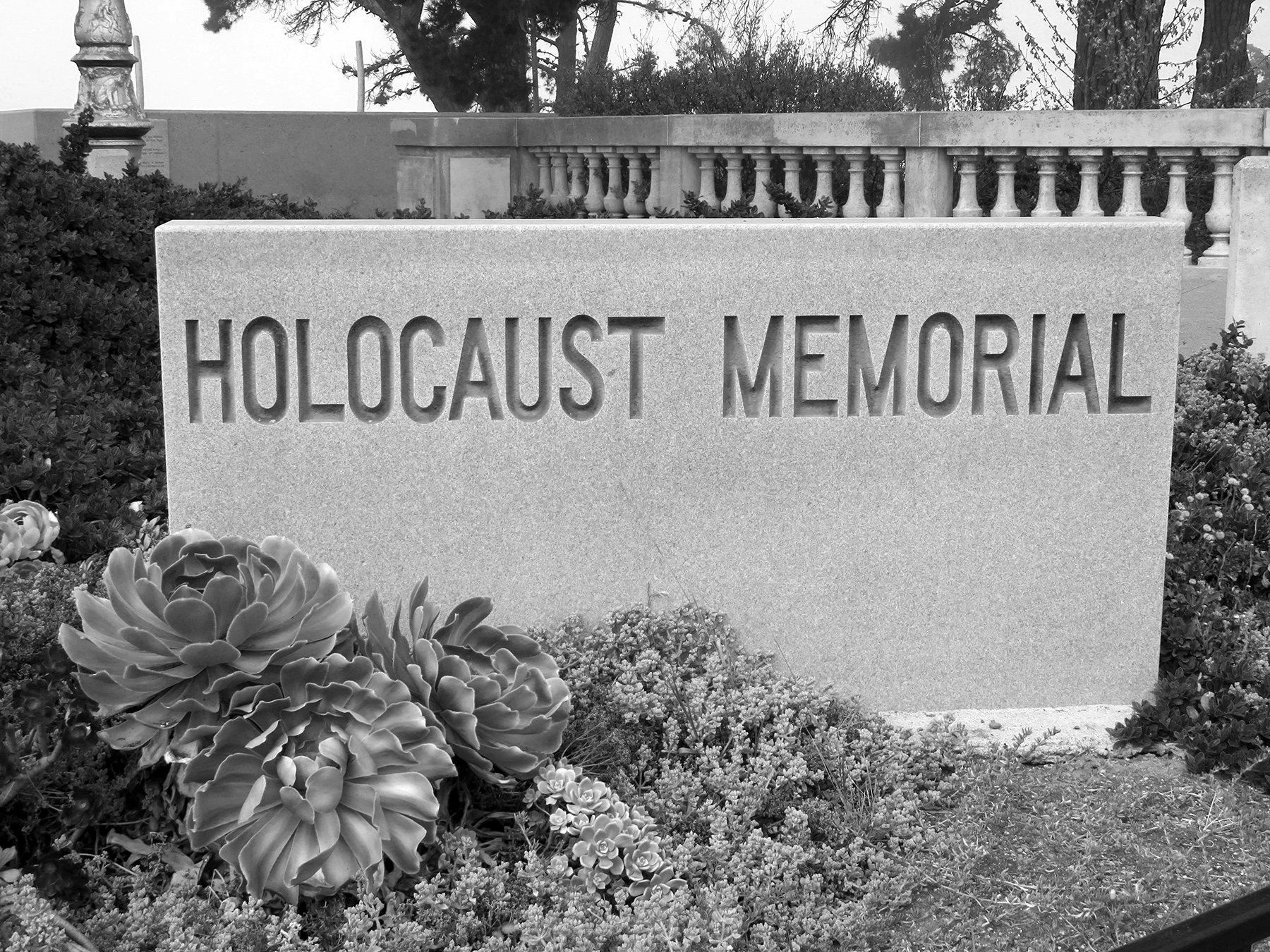All you see is a male torso seemingly looking out from behind barbed wire, when you approach on foot. No signs, no pointers, just a ghostly white figure looking across the street.

Depending on your viewing angle his hand looks ambiguously as if about to grip the barbed wire, or is beckoning you for a closer look.

Look I did. Walking slowly up the hill, reading the plaques and then confronting the memorial in its full configuration: 11 bodies splayed across the cement floor, in a haphazard, star-shaped pile. The sole survivor of the fascist murder turning his back to his sisters and brothers, watching a world go by behind the fence that is oblivious to the memory.


Or not. Some want that the memory itself ceases to exist. Last year every single household in the neighborhood of the Lincoln Park memorial received anti-Semitic hate mail that contained extremist Holocaust denialism and conspiracy theories about Jews, and enclosed a reading list recommending titles such as “The Hoax of the Twentieth Century” and “Treblinka: Extermination Camp or Transit Camp?” It was sent from Washington D.C. by the Barnes Review, a neo-fascistic organization, according to the Southern Poverty Law Center, and deemed one of the most virulent anti-Semitic groups in the nation.

The Holocaust Memorial was installed in 1984, created by George Segal in bronze and covered in his signature chalky white patina. Here are his own words about his motivation to create the sculpture after an initial refusal, from a review in the NYT in the early 80s.
The star like ordering of the corpses needs no further explanation. The standing survivor is supposed to be modeled after a famous photograph by Margaret Bourke-White of the liberation of Buchenwald.

My surprise at the spotless appearance of the figures, exposed to the elements for almost 40 years and to frequent acts of vandalism – you can go right into the display and walk among them, with no guards on site – was quickly explained.

About a year ago the sculpture underwent some major restoration. This February, it was officially reopened, with a talk by Barbara Kirshenblatt-Gimblett, the chief curator of the core exhibition at Polin Museum of the History of Polish Jews in Warsaw and professor emerita at New York University, who serves on advisory boards for Jewish museums in Vienna, Berlin and Moscow.

The restored version has much less fence than what I saw in older photographs, and the survivor in his white Kittel is no longer having his hand in the barbed wire. I wonder what happened. Overall, though, the installation is haunting, fulfilling its original mandate to raise awareness about the Holocaust. A timely task, you’ll agree, in light of the anti-Semitic sentiments raising their ugly heads in this country without shame once again.











Sara Lee
“Chilling,” “haunting” indeed!
Eric Brody
Very moving. I am fortunate not to have lost anyone of whom I am aware in the Holocaust but have always avoided memorials and movies about it because they just make me so very sad that people could do this to others, but they did and we must never forget. Thanks for your piece, excellently written as always.